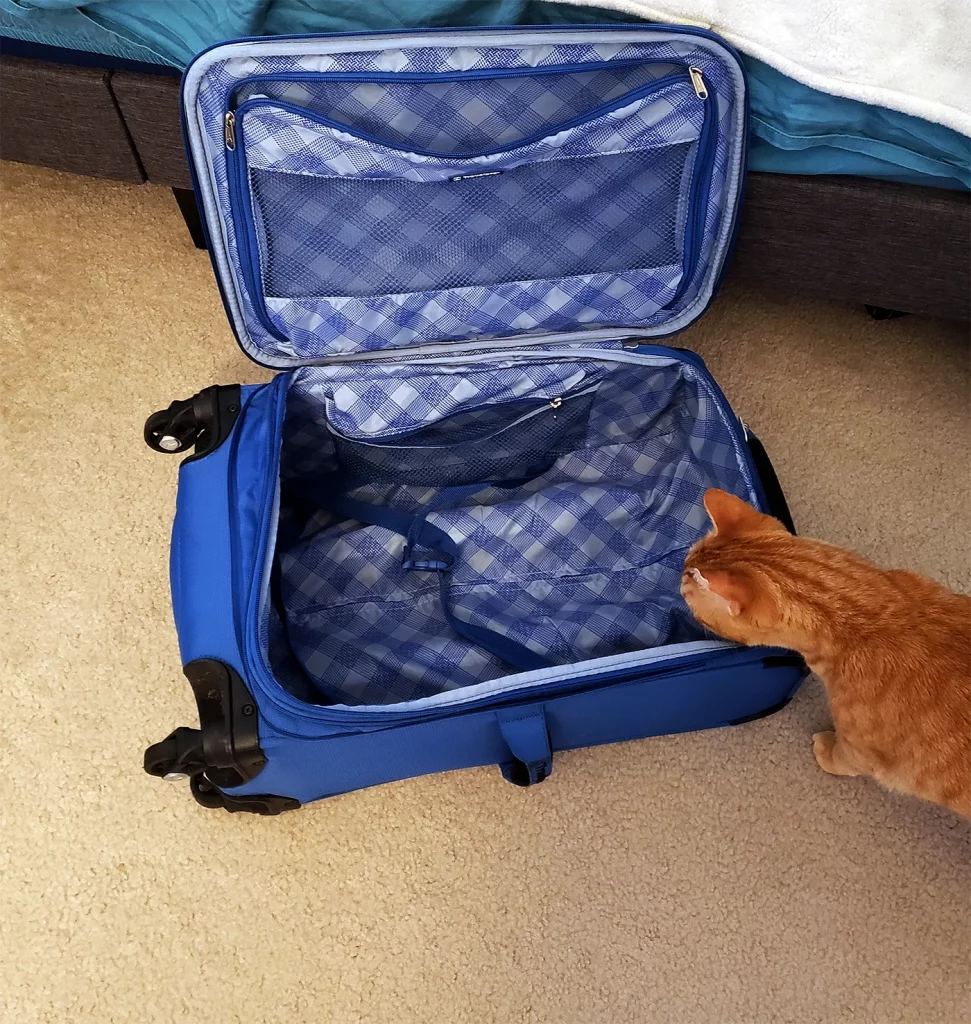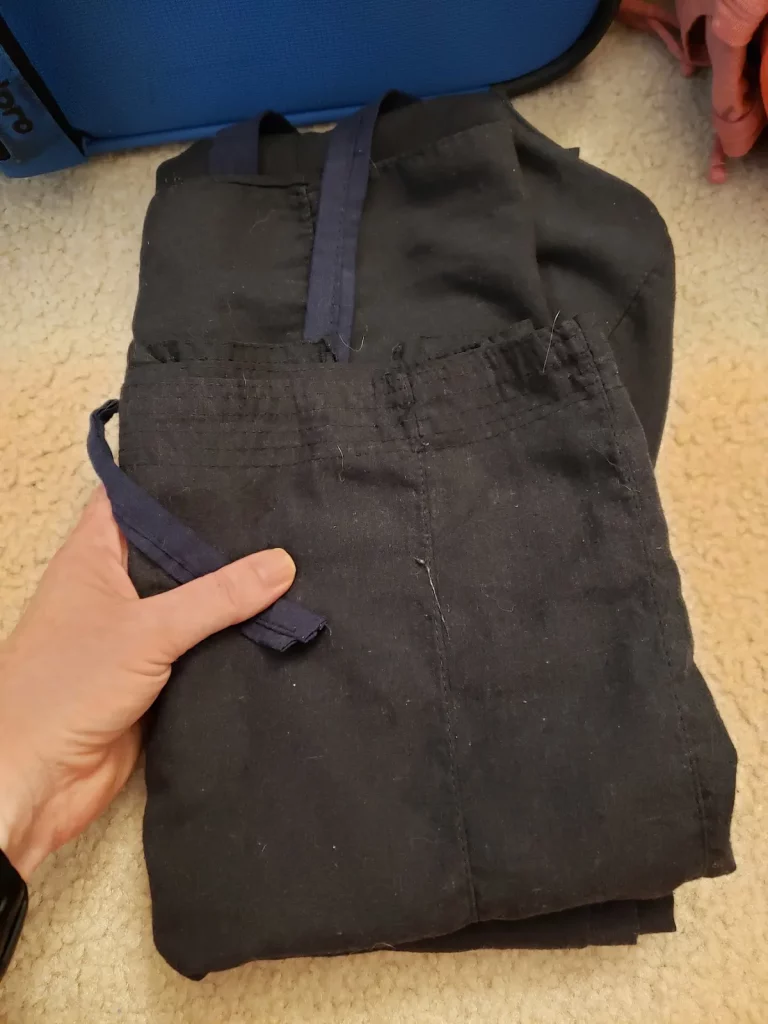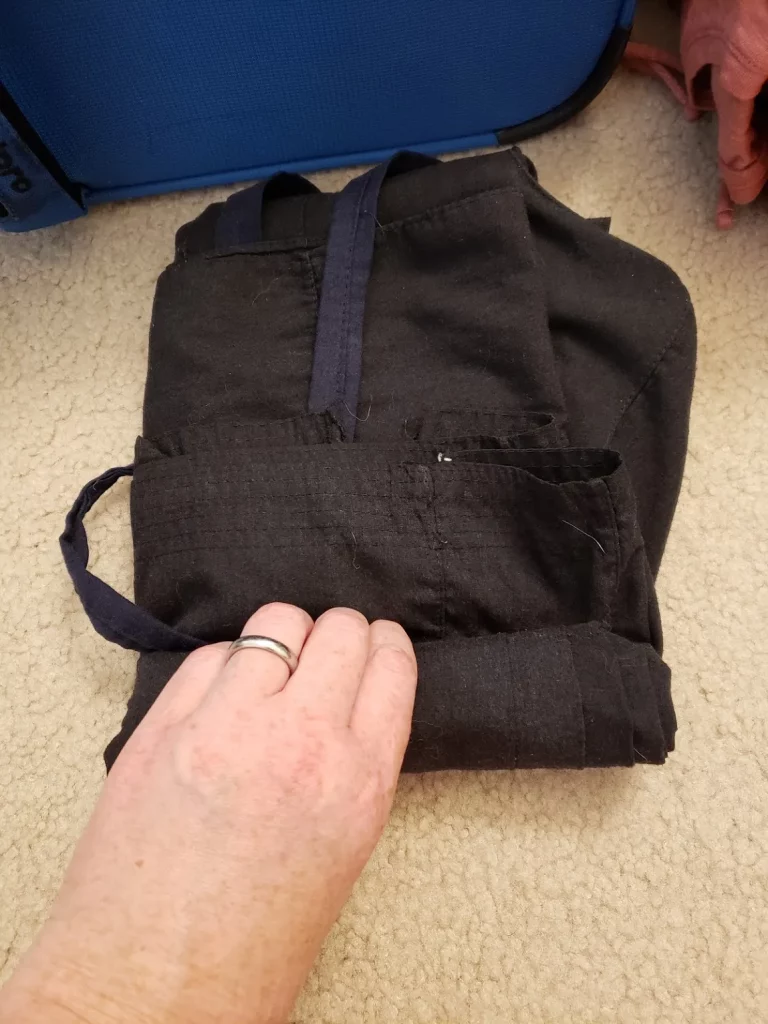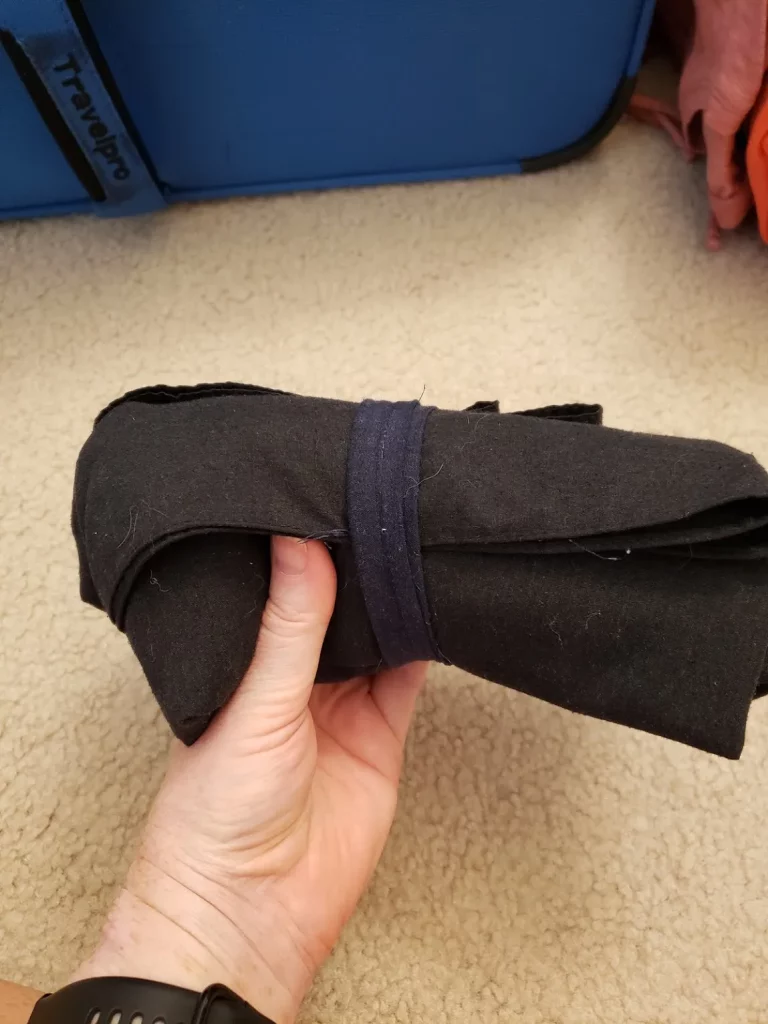A quick, step-by-step guide to getting your things there and back again.
Author’s Note: In this “how-to” article, I go over the basics of how to pack for a trip. Provided are high-level recommendations for deciding what to take and what not to take, how to pack items, and how to make the most of your space. I do not cover types of or recommendations for suitcases and such. Products recommended here are limited to silicone travel bottles, and using entities like Sephora & Ulta to source trial-sized toiletries.
See what you have to work with

- Pull out the bag/s you intend to take. Seeing what space you have to work with will help in deciding what to take.
- Give yourself a clean workspace. Make your bed if you have to.
- Pile clothes according to type. Get as granular as you have the time and patience for:
– Bottoms: Trousers, shorts, skirts, etc.
– Tops: Tanks, t-shirts, sweaters, etc.
– Underthings: Bras, underwear, socks, etc.
– Specialty Clothes: Workout clothes, swimming stuff, pyjamas, etc. - Separate out the “must haves”, “nice to haves”, and the “not takings”. When in doubt, leave it, and put the “not takings” away as you decide on them so they don’t clutter your space.
- Have a place for everything. Dedicated spaces and pockets are key to not losing track of items. More on that below.
Pro Tips:
- Select bottoms that can be used with multiple tops.
- If stuck between options, lean towards the ones that fold down smaller.
- Where possible, pick items that don’t wrinkle and/or stain easily.
- Girl pockets are real. Given the impossibility of storing a passport in them, it’s difficult to make recommendations for where to keep it safe. I once went as far as to have a deep pocket sewn into the inside of my winter coat. A dedicated pocket deep inside a travel bag is another option. Remember, wherever you keep it, keep it inconvenient. The harder it is for you get to, the harder it is for a stranger to get to as well.
- As you travel more, build up a catalogue of dependable clothes and toiletries that you know you can pack quickly if you find yourself in a hurry.
- Save Room! Remember to leave space in your bags to bring things back. One way to do this is to unfold some of your items so they take up more space on the way there, and compress (roll) fold them on the way home. (See next section.)
Get it in the bag.
- Roll, roll, roll your clothes. “The smaller the better. The tighter the sweater.” Fold items as you typically would when putting them in a drawer, then tightly roll them like you would a piece of paper. The example below is a pair of Thai fisherman pants. Note how the waistband strings can be wrapped around the garment to pull the roll in even tighter. Cat hair optional.



- Put things inside your shoes. Free space! Use it if you’re comfortable with it. Socks and underwear can go in here, as can small trinkets and fragile items.
- Pack your suitcase from the wheels up. Heavier things are better going in towards the wheels to avoid smashing lighter things when the suitcase is upright.
- Surround fragile things from all possible angles. This will help avoid breakage since suitcases will get tossed around and heavier things might get set (or thrown) on top of them during transit.
- Indestructible items on the outside. Adjacent to the point above, durable items like sandals, books and the like can go in outside pockets to make extra room inside your pack.
- Dedicated pockets for the win. Items you want to have readily accessible or that are easily lost need to have their own space. Aim for a carry-on pack with multiple pockets, and pick dedicated ones for things like ear buds, glasses, keys, books, tablets, etc. Having a dedicated pocket for these types of items creates routine and helps keep track of them whilst in transit, so in the event something goes missing, you’ll know right away instead of dedicating time trying to remember where you put it. Pro Tip: Since you’re not using your house keys on the road, put them in a dedicated pocket that’s otherwise inconvenient for anything else, or on a key clip inside your bag.
- Passport/Wallet/Phone: These are generally the three things that will make your trip hellish if lost, especially when abroad. If you cannot keep these things physically on your person, have a dedicated pocket for them inside your travel bag or purse. To the point above, keep it inconvenient. Again, the harder it is for you get to, the harder it is for a stranger to get to.
- Leave the valuables at home! No one will know you’re not wearing them, and having them on you whilst traveling will just create unnecessary anxiety.
- Once again, save room! See the point above.
- Need more room? Layer up your outfit. Planes and trains tend to be cold anyway, so layering an outfit can provide extra warmth whilst also saving room in your pack. Additionally, layers could be used as pillows and blankets, or, in a pinch, thrown over a seat for a makeshift tent for little ones traveling with you.
Packing Toiletries
Dopp kits — also called toiletry bags by normal people — are invaluable for keeping toiletries compact and easily transportable. It’s likely you’ll have to try out a few to know what’s good for you, but if you’re anything like me and tend to travel with an obscene quantity of products for makeup, hair, and general bathroom rituals, a simple, but large-ish, zip-up bag is appropriate. (The zipper will prevent the bag from opening and dumping its contents.)
Aim for something waterproof or water resistant on the inside so that in the event something opens inside the dopp bag, it won’t leak out onto the other items in your pack. (I have an embarrassing amount of experience with this for someone who’s literally been around the world twice.)
- Start with irreplaceable items (typically anything prescription): Contact lenses, glasses, medication, that sexy retainer you’ve worn since the summer just before junior year of high school when you finally got your braces off, etc. And don’t forget the associated cases and backups.
- Next, difficult or expensive-to-replace items. A lot of face regimen, hair care, and makeup items tend to fall into this category.
- Then, anything that can be easily replaced on the road. As it happens, most of these items also tend to come in travel sized options: Toothpaste, mouthwash, shampoo, conditioner, contact lens solution, cotton buds, etc.
- First aid kits can typically be left at home, unless there is a genuine concern about being able to find bandages and ointments on road.
Pro Tips:
- Instead of taking that big bottle of your specialty product, get a trial size of it. Companies like Sephora* and Ulta* are stupid good at selling this stuff. Then, if possible, refill the smaller bottle from the larger one as needed. Avoid refilling trial bottles with something different from what’s on the label. Unless you’re a glutton for chaos, but hey, judgement-free zone.
- If getting or refilling trial item is not in the cards, get travel jars and bottles for larger items like shampoo, conditioner, moisturizer etc., and don’t forget the labels. I’ve had a lot of success with these Go Gear silicone ones offered at CVS*. They’re inexpensive, easy to label, and don’t leak, no matter how hard you accidentally sit on them.
- If you travel often (or plan to), fill your travel bottles after you get home so they’re ready to grab and go for the next trip.
- Pills: Pill boxes, particularly “day of the week” ones, are a great space saver, provided you’re intimate enough with your medications to remember what’s what. If you’re taking something temporarily or are new to the meds, better to take the bottle, or take a picture of the prescription for reference in the event of an adverse reaction, interaction, or overdose. Aim for boxes made specifically for travel, something with a super secure lid.
- Makeup Brushes: Please get a protective case for your brushes. Doesn’t have to be anything fancy. Just something that fits the brushes you want to take and is compact enough to either fit in the dopp kit or take up minimal room outside it. No matter the expense of your brushes, tossing them into a dopp bag with other toiletries is a good way to bend bristles and break handles.
- Makeup: If available, invest in smaller or travel-sized versions of your makeup. Personal example worthy of its own Privilege Disclaimer: I’ve invested in a few Natasha Denona* palates, but I rarely travel with them for fear of accidentally destroying them in some freak-but-all-too-common-for-me comedy of errors. Instead, I’ve bought a couple of her minis to travel with. They’re a quarter the price and the containers are so solid, it’s a challenge to not want to drop them. Prioritize any items based on your signature look (I never travel without my mascara), and take a couple of options for being able to mix it up if you feel so inclined. Dress for you.
- Bathroom Appliances: It might impress you to find out there are travel versions of bathroom appliances. Or you might never think about it. Either way, there are travel-sized options for things like hair dryers, electric toothbrushes, electric razors, hair irons, you name it. It’s likely okay to assume your hotel will have a hair dryer, but there are exceptions. If this is a problem you’d rather avoid, definitely take a look at smaller versions of your preferred appliance/s. I think you’ll find they are worth the investment, particularly as you build your travel résumé.
Packing Checklists
A checklist for what to take is good both for making sure all the intended items are taken and that everything comes home.
*Not a sponsor and not giving us money some other way either.

No responses yet